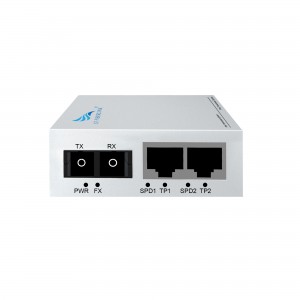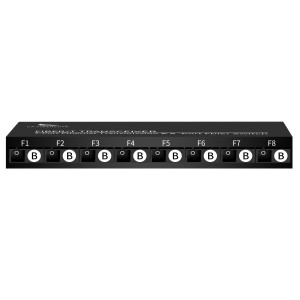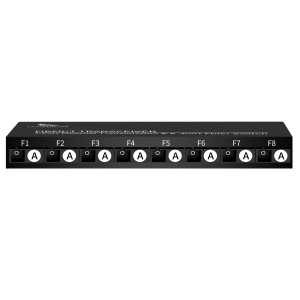4-port 10/100/1000M WDM Media Converter (Single-mode Single-fiber SC)
4-port 10/100/1000M WDM Media Converter (Single-mode Single-fiber SC)
Product Features:
Proudly presenting our newest product – Gigabit 2 Optical 2 Electrical Single Mode Single Fiber Outdoor Optical Transceiver! Huizhou Changfei Optoelectronics Technology Co., Ltd., a leading professional manufacturer of industrial communication products and cloud-managed network products in China, is proud to launch this innovative solution. With our expertise in industrial communication fields such as industrial Ethernet, industrial wireless, fieldbus, etc., we strive to become a world-class industrial communication expert!
The Gigabit 2 Optical 2 Electrical Single Mode Single Fiber Outdoor Fiber Media Converter is designed to meet the growing demand for high-speed data transmission in outdoor environments. Iron case design ensures durability and long-lasting performance, making it suitable for challenging operating conditions. The converter is IP30 rated to protect against dust, moisture, and other harsh environments common outdoors.
This reliable and efficient fiber optic media converter enables seamless conversion between optical and electrical signals. It supports single-mode, single-fiber connections, ensuring optimal performance with minimal signal loss. It is capable of transferring data at gigabit speeds, providing lightning-fast connections for a variety of industrial applications.
One of the main highlights of this product is its compatibility with various devices and network setups. It can be easily integrated into existing systems, making it a cost-effective solution. An external power supply further enhances its flexibility and facilitates installation and maintenance.
At Huizhou Changfei Photoelectric Technology Co., Ltd., we understand the importance of providing comprehensive solutions to our valued customers. We don’t just provide products; we provide systematic equipment, solutions and overall services. Our expert team is dedicated to providing the highest level of customer satisfaction.
By combining our extensive industry experience, cutting-edge technology and focus on innovation, we continually strive to develop products that meet our customers’ ever-changing needs. Our Gigabit 2 Optical 2 Electrical Single Mode Single Fiber Outdoor Fiber Media Converter is a testament to our dedication to quality solutions.
In conclusion, the Gigabit 2 Optical 2 Electrical Single Mode Single Fiber Outdoor Fiber Optic Media Converter is a versatile and reliable product designed to enhance data transmission in outdoor environments. With its iron case design, IP30 rating and external power supply, it offers durability, protection and ease of use. Trust Huizhou Changfei Photoelectric Technology Co., Ltd. to provide you with cutting-edge solutions and unparalleled services. Join us to redefine industrial communication and become a world-class expert in this field!
What This Product Does
◇ CF-2012GSW-20 is a gigabit media converter that provides gigabit RJ-45 ports and gigabit SC fiber optic ports for conversion between electrical and optical signals.
How This Product Works
◇ CF-2012GSW-20 adopts WDM (Wavelength-division multiplexing) technology, each optical port can receive and send data at the same time with only one single mode fiber, and the maximum transmission distance can reach 20 kilometers. It can convert the electric port signal and the optical port signal, and carry out remote data transmission through optical fiber.
◇The CF-2012GSW-20 has both A and B optical ports, which are convenient for pairing with the opposite end and can form a cascaded topology. Compared with conventional single port fiber optic transceivers, it is more flexible to use.
Other Features
◇ In addition, the media converter can be used as a standalone device for automatic MDI/MDI-X in the TX port, where duplex mode is automatically negotiated.
technical parameter:
|
Model |
CF-2012GSW-20 | |
| Interface Characteristics | ||
|
Fixed Port |
2* 10/ 100/ 1000Base-T RJ45 port 2* 1000Base-X uplink SC fiber port |
|
|
Ethernet Port |
10/ 100/ 1000Base-T auto-sensing, full/half duplex MDI/MDI-X self-adaption |
|
|
Twisted Pair Transmission |
10BASE-T: Cat3,4,5 UTP(≤100 meter) 100BASE-T: Cat5e or later UTP(≤100 meter) 1000BASE-T : Cat5e or later UTP(≤100 meter) |
|
| Optical Port | Default optical module is single-mode single-fiber 20km, SC port | |
| Wavelength/Distance | A-end: RX1310nm / RX1550nm 0 ~ 40KM
B-end:RX1550nm/ RX1310nm 0 ~ 40KM |
|
| A-end: RX1490nm / RX1550nm 0 ~ 120KM
B-end:RX1550nm/ RX1490nm 0 ~ 120KM |
||
| Chip Parameter | ||
| Network Protocol | IEEE802.3 10BASE-T, IEEE802.3i 10Base-T,
IEEE802.3u 100Base-TX, IEEE802.3u 100Base-FX, IEEE802.3x IEEE802.3ab 1000Base-T;IEEE802.3z 1000Base-X; |
|
|
Forwarding Mode |
Store and Forward(Full Wire Speed) |
|
|
Switching Capacity |
8Gbps |
|
|
Buffer Memory |
5.95Mpps | |
|
MAC |
2K | |
|
LED Indicator |
Fiber | Fiber1/Fiber2 |
| Data | 1X/2X (green) | |
| Power | PWR (green) | |
| Power | ||
| Working Voltage |
AC:100-240V |
|
|
Power Consumption |
Standby<1W, Full load<5W |
|
|
Power Supply |
DC:5V/2A industrial power supply |
|
| Lightning protection &Certification | ||
| Lightning protection | Lightning protection: 4KV 8/20us, Protection level: IP30 | |
| Certification | CCC;CE mark, commercial; CE/LVD EN60950;FCC Part 15 Class B; RoHS | |
| Physical Parameter | ||
| Operation TEMP | -20~+55°C;5%~90% RH Non condensing | |
| Storage TEMP |
-40~+85°C;5%~95% RH Non condensing |
|
| Dimension (L*W*H) | 88mm* 71mm*27mm | |
| Installation | Desktop | |
Product Size:
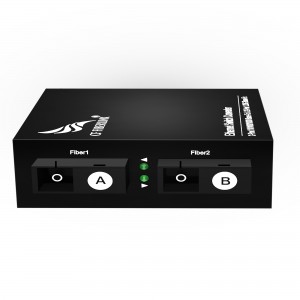
Product application diagra:

How to choose a fiber optic transceiver?
Optical fiber transceivers break the 100-meter limitation of Ethernet cables in data transmission. Relying on high-performance switching chips and large-capacity caches, while truly achieving non-blocking transmission and switching performance, they also provide balanced traffic, isolation and conflict. Error detection and other functions ensure high security and stability during data transmission. Therefore, fiber optic transceiver products will still be an indispensable part of actual network construction for a long time. So, how should we choose fiber optic transceivers?
1. Port function test
Mainly test whether each port can work normally in the duplex state of 10Mbps, 100Mbps and half-duplex state. At the same time, it should be tested whether each port can automatically select the highest transmission speed and automatically match the transmission rate of other devices. This test can be included in other tests.
2. Compatibility test
It mainly tests the connection ability between the optical fiber transceiver and other devices compatible with Ethernet and Fast Ethernet (including network card, HUB, Switch, optical network card, and optical switch). The requirement must be able to support the connection of compatible products.
3. Cable connection characteristics
Test the fiber optic transceiver’s ability to support network cables. First, test the connection ability of Category 5 network cables with lengths of 100m and 10m, and test the connection ability of long Category 5 network cables (120m) of different brands. During the test, the optical port of the transceiver is required to have a connection capability of 10Mbps and a rate of 100Mbps, and the highest must be able to connect to a full-duplex 100Mbps without transmission errors. Category 3 twisted pair cables may not be tested. Subtests can be included in other tests.
4. Transmission characteristics (transmission loss rate of data packets of different lengths, transmission speed)
It mainly tests the packet loss rate when the optical fiber transceiver optical port transmits different data packets, and the connection speed under different connection rates. For the packet loss rate, you can use the test software provided by the network card to test the packet loss rate when the packet size is 64, 512, 1518, 128 (optional) and 1000 (optional) bytes under different connection rates. , the number of packet errors, the number of packets sent and received must be more than 2,000,000. Test transmission speed can use perform3, ping and other software.
5. The compatibility of the whole machine to the transmission network protocol
It mainly tests the compatibility of fiber optic transceivers to network protocols, which can be tested in Novell, Windows and other environments. The following low-level network protocols such as TCP/IP, IPX, NETBIOS, DHCP, etc. must be tested, and the protocols that need to be broadcast must be tested. Optical transceivers are required to support these protocols (VLAN, QOS, COS, etc.).
6. Indicator status test
Test whether the status of the indicator light is consistent with the description of the panel and the user manual, and whether it is consistent with the current status of the fiber optic transceiver.


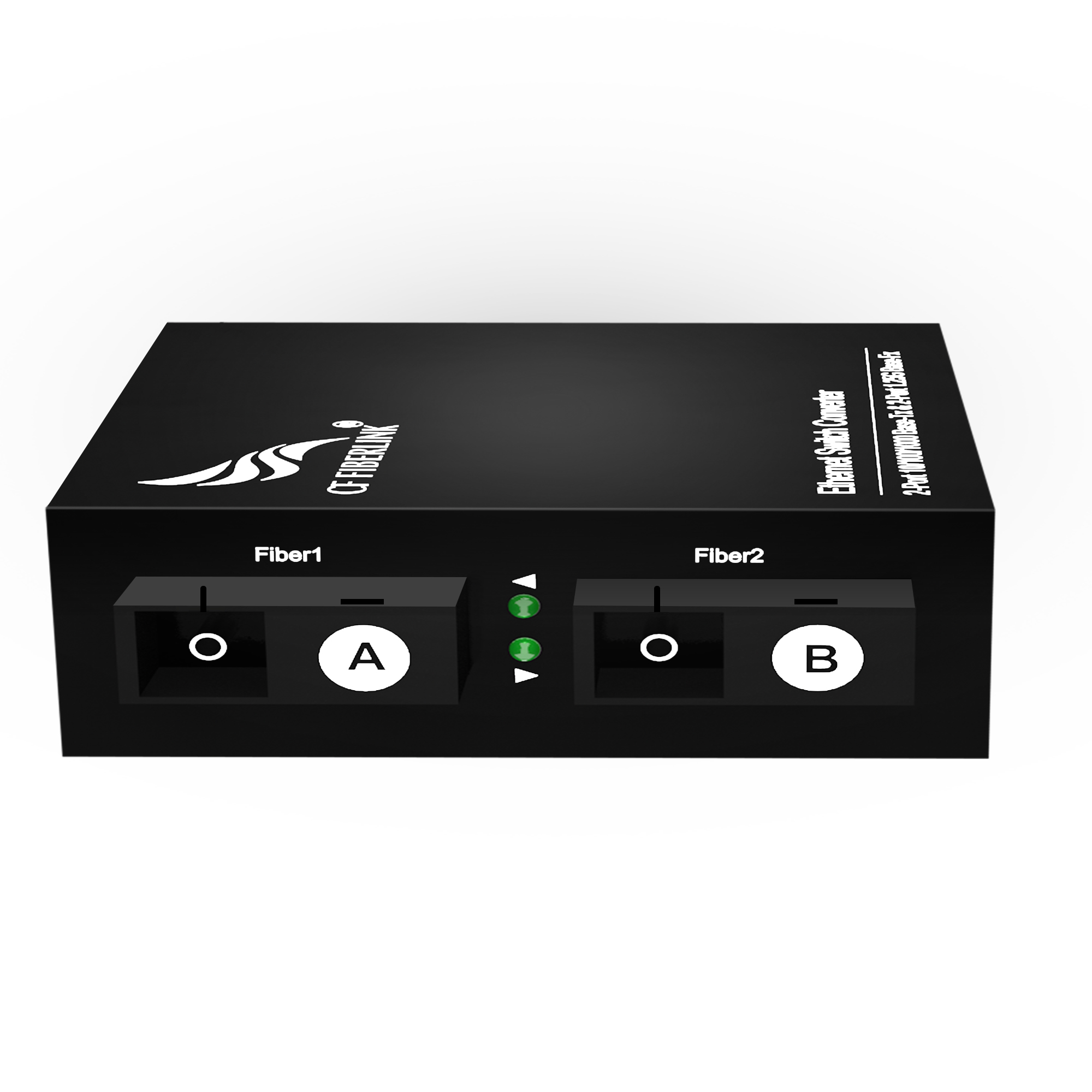





2-300x300.jpg)

